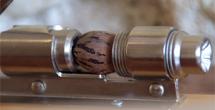About The Food Forest
Developed by Annemarie and Graham Brookman and their children Tom and Nikki, the Food Forest is a permaculture farm and learning centre that demonstrates how an ordinary family, with a typical Australian income can grow its own food and create a productive and diverse landscape.
When the 15 hectare property was purchased in 1983, it was not much more than a bare barley paddock; only a few towering River Red Gums remained along the Gawler River from the time the Kaurna Aboriginal people camped in their shade and gathered food from the land. The heritage-listed homestead was built within the first few years of white settlement of South Australia and much of the fascinating history of the farm can be traced through the stone troughs at which Clydesdale horses drank and implements that once made life easier for the farmers of the day.
See Food Forest before and after photos.
Today, the buzzing biodiversity of the property produces over 160 varieties of organically certified fruit and nuts, wheat and vegetables, free range eggs, honey, carob beans, Australian native foods, nursery plants and timber. The collections of tree crop varieties represent a unique genetic resource, willingly shared with others wishing to establish sustainable plantings. The wild zone along the Gawler River, which had been invaded by exotic species like African boxthorn and olives, has been restored through the rebuilding of the ecosystem with endemic species from remnant populations along the river.
 Click on the thumbnail to the left for a larger image of our property design (it will open in a new window, simply close it when you've finished looking).
Click on the thumbnail to the left for a larger image of our property design (it will open in a new window, simply close it when you've finished looking).
Endangered wildlife such as Brush Tailed Bettongs help the goose flock manage the forest floor. Together with thousands of species of insects, birds and other creatures they form the complex and bountiful ecosystem contained within a 1.5 km predator-proof fence.
The homestead at The Food Forest was built with thick rock walls and tiny casement windows. This dark and 'defensive' building has been extended using passive solar design and a fusion of strawbale, massive rock and highly insulated galvanised iron to create a light, spacious and sustainable living space.
Rainwater is collected for use in the house. Solar panels heat the water and photovoltaic cells provide the house with electricity and surplus power is fed onto the grid. Water at the house is solar heated.
The severe demarcation between inside and outside made by the early settlers is inappropriate for our Mediterranean climate and has been revolutionised by extending the paving of the verandah into a strawbale-walled, vine-covered outdoor food preparation and entertainment area. The cob oven, residing in this outdoor area, shows the ancient craft of building with special mud mixtures and is used for making pizzas and bread.
The trellis over this area incorporates polycarbonate cladding which allows natural outdoor sunlight to flood the area but cuts out 99% of the harmful UV rays which kill and make life miserable for many people in Australia. Together with the strawbale wall to the south west it provides shelter against wind and rain. The area is also shaded by trees and is adjacent to food gardens.
Environmentally responsible building technologies are further demonstrated in the 'Studio' with its curved garden wall, the 'Eco-gazebo' and drive-in coolroom, all of which are constructed with strawbales.
We have transformed a heritage-listed stone barn into a well-equipped Learning Centre and many practical activities take our students and visitors into the orchards, gardens and bushlands of the property. Our 'loo-with-a-view', a Clivus Multrum composting toilet and reedbed system which transforms human by-products into reeds for mulching, rich compost for fertiliser and golden bamboo for furniture and structural work is also worth a visit.
We are committed to the sharing of information through our courses and field days and on this website you will find some of the technical information that we have learned in our almost 30 years of sustainable gardening, farming and building.
